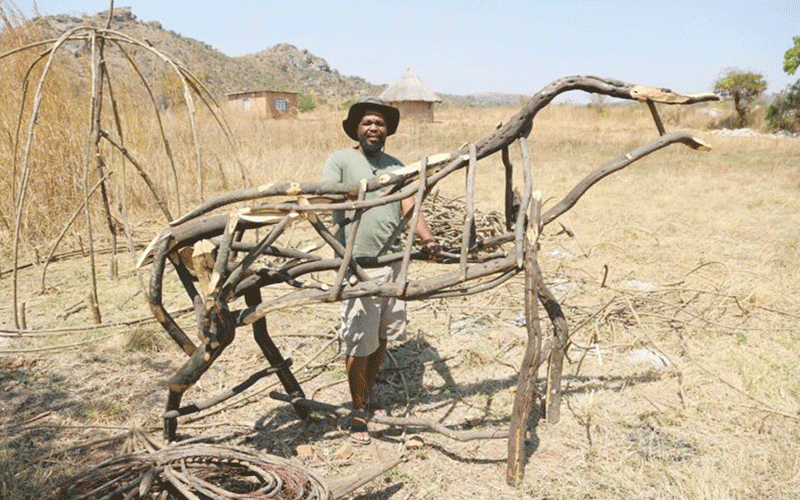
Along a dusty road in Zimbabwe flanked by small brick houses, round thatched huts and crops, two giraffes remain motionless and their long necks extend towards the blue sky.
But these giraffes are not real: they are carefully woven from the stems of a plant that is an invasive pest in many rural areas of the country.
That plant, known as lantana, is now a source of income and creativity for a family of artists.
Lantana grows as a scattered bush with bright flowers, fragrant leaves, and long, twisting stems covered with small spikes and leaves poisonous to livestock, infesting fallow land with impenetrable thickets.
“Lantana is everywhere and people don’t want it. Therefore, I try to use lantana through art,” Joe Zata (48) told EFE at his home on a rocky outcrop in Domboshava, a district about 30km north of Harare.
Zata, an artist for 25 years, works with his three brothers.
Although some communities in India use lantana to make furniture, the Zimbabwean creator came up with the idea of using it during a COVID-19 lockdown in 2020.
“I just experimented during COVID-19. I made an elephant and sold it at a fair. That’s how I started,” he said.
- Mavhunga puts DeMbare into Chibuku quarterfinals
- Bulls to charge into Zimbabwe gold stocks
- Ndiraya concerned as goals dry up
- Letters: How solar power is transforming African farms
Keep Reading
Today, he and his brothers sell two or three pieces a month. They can earn up to US$1 200 for a single entry.
That’s a small fortune in a country beset by economic problems, including 285% inflation that has badly eroded the value of the Zimbabwean dollar.
Lantana, known in the local Shona language as “mbarapati,” is native to tropical America and appears to have been introduced to the country from neighbouring South Africa, where it first arrived via the port city of Durban in 1883 and flourished.
Over the last century, it has spread and become an invasive species in southern Africa.
In 2001, it was listed by the International Union for Conservation of Nature as one of the 100 worst invasive species in the world.
Thomas Marambanyika, senior lecturer in the Department of Geography and Environmental Sustainability at Zimbabwe’s Midlands State University, said lantana threatens biodiversity in protected and unprotected areas of the country.
“People like Mr Zata should be applauded for having presented this initiative, which turns an environmental threat into an economic opportunity,” Marambanyika told EFE.
“This initiative, if scaled up, will go a long way toward reducing or removing lantana from the ecosystem, thus restoring some disturbed or degraded areas,” the professor said.
In addition to serving an environmental purpose, Zata sees his work — which he sells in Harare — as primarily creative.
But it takes a lot of work for the lantana to give in to his artistic vision. To begin with, the thorns need to be removed from the stems, which are left to dry before they can be bent and shaped.
That material can shape a giant rhino standing upright with a mighty upturned horn, a huge tortoise, or an elephant.
“I have lived my whole life in the village,” Zata said. “I grew up watching animals and really loved them. That’s where my inspiration came from.”










